Thousands of working class Bolivians crowd the streets of La Paz every year to buy miniature cars, houses and wads of fake dollar bills representing their dreams of wealth.
Alasitas is a 3-week long fair that, in La Paz, takes place beginning on the 24th of January and in Santa Cruz takes place in September. “Alasitas” is an Aymaran word that means “buy me”, and is the name of the annual fair where people buy miniature items that represent things they hope to attain within the year.
Alasitas is often referred to as the festival of miniatures, as the capital city of La Paz turns into a large market of small things that may become big if you know who to ask. Locals come and buy anything from tiny mobile phones, laptops, cars, and houses, to non-material things like love in the form of a male or female doll, or even matrimony in a form of a marriage certificate.
The festival is held in honor of the indigenous “god of bounty” or “abundance” called Ekeko (sometimes spelled Ekkekko, or Ekkeko). He is often rendered as a short, pudgy, mustached man who wears traditional Andean clothes and carries baskets of grains. Tiny items, from kitchen appliances to college diplomas, are taken home and placed around Ekeko, who the Aymara people believe will bless them with better lives in the coming year.
Hundreds accompany the Bolivian deity statuette “illa of Ekeko” as it is driven to the Alasitas Fair. Andean religious leaders carry urns with burning incense in a procession of the Bolivian deity statuette “illa of Ekeko” as it is driven to the Fair. The pre-Columbian figurine that symbolizes abundance was recently returned to Bolivia by the National Museum of Berna in Switzerland, 156 years after being taken away from its native country.
Images of Ekeko and other items, such as imitation bank notes are blessed during the festivities. The Ekeko statuette is traditionally given a cigarette, sprinkled with alcohol and surrounded with all the miniature items bought at the Alasitas Fair “so our wishes come true that year.”
Many bring their diminished dreams to the statues of Ekkekko they store at home, light a cigarette for he is known as a great smoker, dedicate a few prayers, and then wait for the miraculous gifts which will come within the next year.
Ekeko is the household god and it is not unusual for Bolivians to have a representation of this short and chubby, happy-looking fellow with a mustache and dressed in Andean clothes in their home. To ensure good luck the statue should be received as a gift and not be personally bought. Ekeko brings wealth to the family and keeps misfortune at bay.
To obtain the favor of fortune, Bolivians like to present Ekeko with miniatures – mostly made of a sugary substance – of things they would like to own. This can be a house, a car, furniture, clothes, an airplane but also food. A miniature passport may be bought if one has the wish to travel, a university diploma in case one wants to study or when graduation is near.
Perfectly copied miniature dollar and euro notes are favored over local bolivianos when a devotee wants wealth. Ekeko loves smoking, his statue has a special hole in the mouth for a cigarette.
During Alasitas, the streets are crammed with people who need to buy their miniatures replicas in time – the blessings will take place around noon and they should be prepared by then.
Locals claim if you really believe in miracles, you will get what you want, and many testify it truly works.
Alasitas’ main divinity is Ekeko, but Catholic priests give their blessing to the newly acquired miniature goods as well, while simultaneously honoring the Virgin of La Paz. Whereas the Franciscans focus on the Virgin, the yatiris – the local wizards – focus on Ekeko; the average Bolivian cares about both.
There is not one conclusive theory about how and where the festival started. In the Aymará language, alasitas means ‘buy from me’ and in pre-colonial times Alasitas was always celebrated in September (Bolivian springtime), to ensure a good crop. It is said that the Spanish changed the date to January 24 in commemoration of an indigenous uprising in 1781 and the siege of La Paz by Tupac Katari.
During the colonization the Spanish tried to force Catholicism on the indigenous people. They partly succeeded and many Bolivians converted to Catholicism, however, in reality the Bolivian religion became a mix of Catholicism and traditional Andean beliefs and rituals, which is easily recognized during, for instance, Alasitas.
Sources:
Krazelna: Day of Hekate
Krazelna: Day of Hekate
Krazelna: Day of Hekate
Rachel V Perry: Emancipation Day
Rachel: The Nemesia
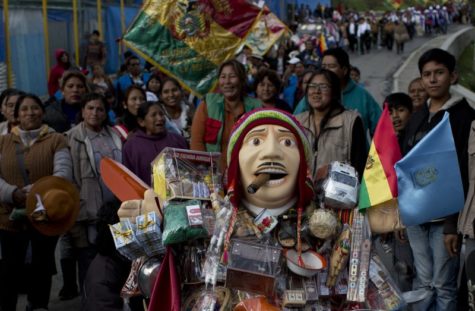
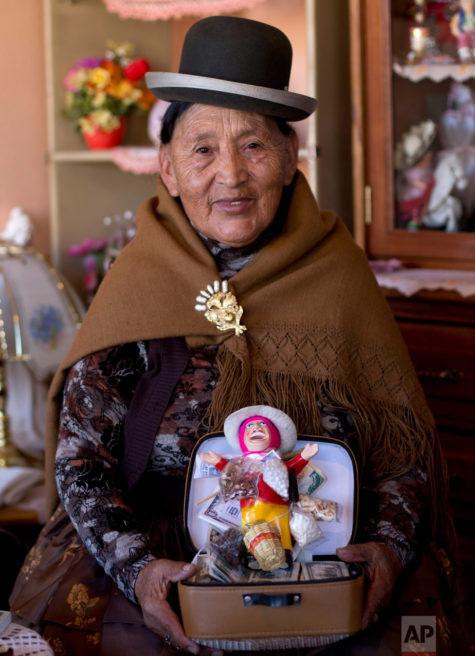
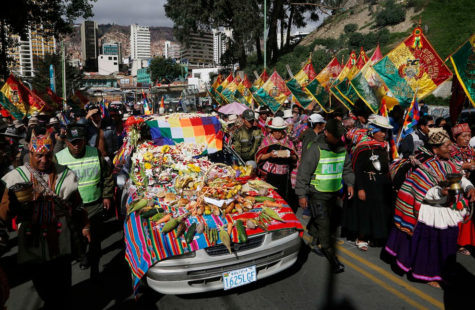
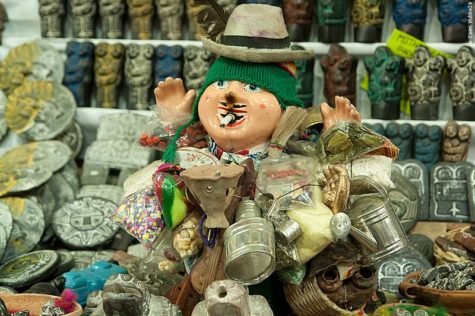



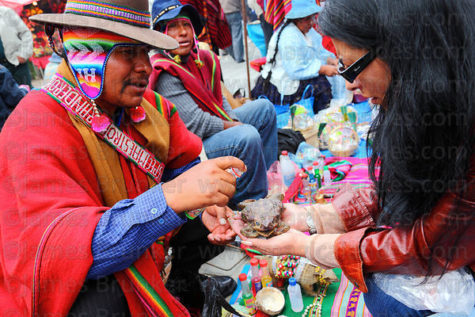



Leave a Reply